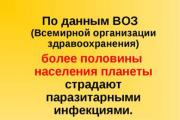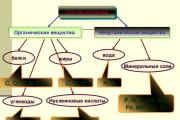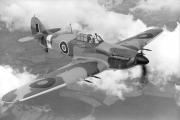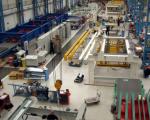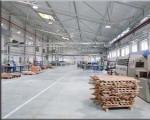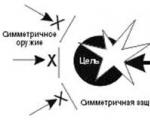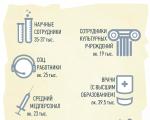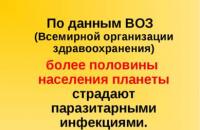It is known that the operation of the machine and the duration of operation are affected by maintenance carried out on time and efficiently, as well as repairs. Back in the USSR, a system of PPR (scheduled preventive maintenance and repair) was introduced. It regulates the scope of the proposed work, the timing of its implementation, as a result of which the reasons for possible machine malfunctions are eliminated. Thus, it is planned preventive maintenance prolongs the life of mechanisms and improves their quality of work.
Scheduled preventative repairs of machines and construction equipment
Operation of the mechanisms involves complex works, which constitute the PPR system, the purpose of which is to prevent breakdowns due to wear of parts. Special events that ensure the maintenance of each machine are necessarily planned in advance and their preparation is carried out.
While machines are in use, scheduled preventive maintenance is carried out either monthly or according to an approved plan. Monthly maintenance is performed during the work shift, at the beginning or at the end. Maintenance carried out according to the plan is in accordance with the requirements of the mechanism manufacturer. There is also a distinction between maintenance carried out seasonally twice a year, when the machines are prepared for winter or summer period operation. During storage of machines or their transportation, scheduled preventive repairs are carried out in accordance with the documentation and requirements for compliance with operating rules.
Drivers or crew members can independently carry out daily repairs of the machine assigned to them. However, if their responsibilities do not include scheduled repairs, then the machine is sent for maintenance centrally to the scheduled maintenance departments, where specialists deal with it. Work on daily maintenance of mechanisms is not planned, as they are mandatory. During the maintenance of construction and road vehicles, technical diagnostics, cleaning, lubrication, inspection, adjustment, and refueling are carried out.
Scheduled preventative repairs of electrical equipment
At large industrial enterprises, routine preventive maintenance is carried out by shop personnel. Only major repairs are a task that is carried out under the guidance of a skilled worker. The operational group formed in this way, headed by the shift supervisor, supervises electrical equipment in the workshops and is responsible for its minor scheduled repairs. At power plants, electrical department personnel inspect tunnels, canals and shafts. The work is progressing according to schedule. During inspection, defects found are recorded in a journal and eliminated when the opportunity arises.
Types of preventative maintenance
Being a system, scheduled preventive maintenance of equipment contains such types of maintenance, care and supervision of the repair and operation of mechanisms as:
- routine preventative maintenance of equipment
- scheduled checks and inspections
- scheduled repairs, medium and small
- major planned repairs
The repair cycle is the period passing between 2 which includes several inspections and smaller repairs. Minor repairs are called scheduled preventative repairs, during which the unit is completely disassembled. The average includes planned repairs, during which the mechanism is partially disassembled and individual components are subject to major repairs. During a major overhaul, components and parts that are heavily worn are replaced, the unit is completely disassembled, and the basic parts are repaired and adjusted.
In order to prevent breakdowns, it is necessary to follow the care instructions and operating rules of the equipment.
1. Essence, forms and indicators of the level of concentration
2. Economic aspects of production concentration
3. The role of small business in the country’s economy
4. Concentration and monopolization in the economy, their relationship
5. Concentration and diversification of production
6. Essence, forms and indicators of the level of specialization and cooperation of production
7. Economic efficiency of specialization and cooperation of production
8. Essence, forms and indicators of the level of production combination
9. Economic aspects of combining industrial production
Review questions:
Topic 3. Legal basis for organizing production
1. Concept of production systems
2. Types of production systems
3.Organization of a new and termination of the activities of an existing enterprise
Review questions:
Section II. Scientific foundations of production organization topic 4. Structure and organization of production at the enterprise
1. Enterprise as a production system
2. The concept of the production structure of an enterprise. Factors determining it
3. Composition and organization of work of internal divisions of the enterprise
4. In-production specialization of production
5. General plan of the enterprise and the basic principles of its development
Review questions:
Topic 5. Tasks and forms of organizing the production process
1. Contents and main components of the production process
2. Structure of the working (production) process
3. Organization of the workplace
4. Organization of maintenance of the production process
Review questions:
Section III. Organization of main production processes topic 6. Organization of the production process over time
1. Rhythm of production and production cycle
2. Standard time for surgery
3. Operating cycle
4. Technological cycle
5. Production cycle
Review questions:
Topic 7. Organization of production using non-linear methods
1. Batch method of organizing production
2. Individual method of organizing production
3. Forms of organization of sites (shops)
4. Volumetric design calculations for creating sections
Review questions:
Topic 8. Flow method of organizing production
1. The concept of continuous production and types of production lines
2. Basics of organizing single-subject continuous production lines
2.1. Models and methods for calculating lines equipped with working conveyors
2.1.1. Working continuous conveyors
2.1.2. Working conveyors with periodic (pulsating) movement
2.2. Models and methods for calculating lines equipped with distribution conveyors
2.2.1. Conveyors with continuous movement and removal of products from the belt
2.2.2. Conveyors with periodic movement and product removal
3. Basics of organizing single-subject continuous production lines
4. Basics of organizing multi-subject variable production lines
5. Multi-subject group production lines
Review questions:
Section IV. Organization of production maintenance chapter 1. Maintenance topic 9. Tool facilities of the enterprise
1. Purpose and composition of the instrumental equipment
2. Determining the need for a tool
3. Organization of the enterprise’s instrumental facilities
Review questions:
Topic 10. Repair facilities of the enterprise
1. Purpose and composition of the repair facility
2. System of scheduled preventive maintenance of equipment
3. Organization of repair work
4. Organization of the enterprise’s repair facilities
Review questions:
Topic 11. Energy management of the enterprise
1. Purpose and composition of the energy sector
2. Rationing and primary accounting of energy consumption
3. Energy supply planning and analysis
Review questions:
Chapter 2. Transport and warehouse services for production Topic 12. Organization of the enterprise’s transport facilities
1. Purpose and composition of the enterprise’s transport facilities
2. Organization and planning of transport services
Review questions:
Topic 13. Organization of warehouse facilities of the enterprise
1. Classification of warehouses
2. Decisions on the organization of warehouses
3. Organization of work of material warehouses
4. Calculation of warehouse space
Review questions:
Chapter 3. Organization of supply and sales activities of the enterprise topic 14. Content of supply and sales activities of the enterprise
1. Logistics and sales activities
2. Organizational structures of supply and sales services
Review questions:
Topic 15. Organization of supplying the enterprise with material and technical resources
1. Study of the market for raw materials and materials
2. Drawing up a procurement plan for material and technical resources
3. Organization of economic relations for the supply of products
4. Legal basis of procurement
5. Material reserves of the enterprise. Management structure and models
6. Maintenance and regulation of stocks
7. Inventory management systems
Review questions:
Topic 16. Organization of supply of material and technical resources to enterprise divisions
Review questions:
Topic 17. Organization of sales activities of the enterprise
1. Organization of marketing market research
2. Formation of the enterprise’s sales program
3. Selection of sales channels for finished products
4. Organization of operational and sales work of the enterprise
5. Settlements with customers
Review questions:
Topic 18. Organizational structures of the marketing service
Review questions:
Chapter 4. Organization of the economic security service of the enterprise topic 19. Organization of the economic security service of the enterprise
1. Concepts of economic security and security services
2. Tasks of organizing the regime and security of the enterprise
3. Organization of access control
4. Ensuring the security of enterprise facilities
Review questions:
Problem book Introduction
Brief summary of the solution methods used and the main theoretical principles
Examples of solving typical problems
Problems to solve independently
2. System of scheduled preventive maintenance of equipment
The planned preventive form of organizing the repair of technological equipment throughout the world is recognized as the most effective and has found the greatest distribution. The development of a system for scheduled preventive maintenance of equipment began in the USSR in 1923. Currently, various versions of the preventive maintenance system are the basis for organizing the maintenance and repair of equipment at enterprises in most industries in the sphere of material production and service.
System of scheduled preventive maintenance of equipment- this is a set of planned organizational and technical measures for the care, supervision of equipment, its maintenance and repair. The purpose of these measures is to prevent progressively increasing wear, prevent accidents and maintain equipment in constant readiness for work. The PPR system involves carrying out preventive measures for maintenance and scheduled repair of equipment after a certain number of hours of its operation, while the alternation and frequency of activities are determined by the characteristics of the equipment and its operating conditions.
PPR system includes
Maintenance- this is a set of operations to maintain the functionality of equipment when used for its intended purpose, during storage and transportation. Maintenance includes
routine maintenance between overhauls
and periodic preventive maintenance operations.
Routine maintenance between overhauls consists of daily monitoring of the condition of the equipment and compliance with the rules of its operation, timely adjustment of mechanisms and elimination of minor malfunctions that arise. These works are performed by the main workers and repair personnel on duty (mechanics, lubricators, electricians), as a rule, without equipment downtime. Periodic preventive maintenance operations regulated and carried out by repair personnel according to a pre-developed schedule without equipment downtime. Such operations include
inspections carried out to identify defects that must be eliminated immediately or during the next scheduled repair;
flushing and oil change provided for equipment with centralized and crankcase lubrication systems;
accuracy check performed by technical control and chief mechanic personnel.
Scheduled repairs includes
current repairs
and major repairs.
Current repairs is carried out during the operation of the equipment in order to ensure its operability until the next scheduled repair (the next routine or major). Current repairs consist of replacing or restoring individual parts (parts, assembly units) of equipment and adjusting its mechanisms. Major renovation carried out with the aim of restoring the full or close to full service life of the equipment (accuracy, power, productivity). Major repairs, as a rule, require repair work in stationary conditions and the use of special technological equipment. Therefore, it is usually necessary to remove the equipment from the foundation at the site of operation and transport it to a specialized department where major repairs are carried out. During a major overhaul, the equipment is completely disassembled, all its parts are checked, worn parts are replaced and restored, coordinates are aligned, etc.
The repair and maintenance system, depending on the nature and operating conditions of the equipment, can operate in different organizational forms:
in the form of a post-examination system,
periodic repair systems
or standard repair systems.
Post-examination system involves carrying out equipment inspections according to a pre-developed schedule, during which its condition is established and a list of defects is compiled. Based on the inspection data, the timing and content of the upcoming repairs are determined. This system is used for certain types of equipment operating under stable conditions.
Periodic repair system involves planning timing and volumes repair work all types based on a developed regulatory framework. The actual scope of work is adjusted relative to the standard based on the results of the inspection. This system is most common in mechanical engineering.
Standard repair system involves planning the volume and content of repair work based on precisely established standards and strict adherence to repair plans, regardless of the actual condition of the equipment. This system applies to equipment whose unscheduled shutdown is unacceptable or dangerous (for example, lifting and transport devices).
The effectiveness of the PPR system is largely determined by the development of its regulatory framework and the accuracy of the established standards. The standards of the enterprise's PPR system are differentiated by equipment groups. Basic repair standards are
repair cycles and their structure,
labor and material intensity of repair work,
material supplies for repair needs.
Repair cycle- this is the period of time from the moment the equipment is put into operation until the first major overhaul or between two consecutive major overhauls. The repair cycle is the smallest repeating period of equipment operation, during which all types of maintenance and repair are carried out in the established sequence in accordance with the structure of the repair cycle. The structure of the repair cycle establishes the list, quantity and sequence of equipment repairs during the repair cycle. For example, the repair cycle structure may include the following repair sequence:
K–T 1
- T 2
- T 3
- TO,
Where T 1
,
T 2
And T 3
- respectively, the first, second and third current repairs;
TO- major repairs (only one major repair is included in the repair cycle).
The content of work performed within each of the current repairs is regulated and may differ significantly from others present in the repair cycle. The structure of the repair cycle may include a small ( M) and average ( WITH) repair: for example, T 2
= C; T 1
= T 3
= M.
Similarly, the structure of the maintenance cycle can be presented, establishing the list, quantity and sequence of work on between-repair maintenance (shift inspection, partial inspection, replenishment of lubricant, replacement of lubricant, preventive adjustment, etc.). It is possible to include maintenance work ( THAT) into the structure of the repair cycle, for example:
WHO 1
- T 1
- THAT 2
- T 2
- THAT 3
- T 3
- THAT 4
- TO.
The repair cycle is measured by the operating time of the equipment; downtime during repairs is not included in the cycle. The duration of the repair cycle is determined by the service life of the main mechanisms and parts, the replacement or repair of which can be carried out during complete disassembly of the equipment. Wear of main parts depends on many factors, the main ones being
type of production, on which the intensity of equipment use depends;
physical and mechanical properties of the material being processed, on which the wear rate of equipment and its parts depends;
operating conditions, such as high humidity, dust and gas contamination;
equipment accuracy class, which determines the level of requirements for monitoring the technical condition of equipment;
Repair cycle duration
T is determined in machine-hours worked by calculation using empirical dependencies that take into account the influence of many factors, including those listed above:
Where T n- standard repair cycle, hours (for example, for certain metal-cutting machines T n= 16,800 hours);
ß
P ,
ß
m ,
ß
at ,
ß
T ,
ß
r- coefficients that take into account, respectively, the type of production, the type of material being processed, operating conditions, accuracy and dimensions of equipment.
The values of the coefficients and the standard duration of the repair cycle are determined on the basis of generalization and analysis of the actual data of the enterprise or are taken from reference data.
Overhaul period T mr And maintenance frequency
T That are also expressed by the number of hours worked:
 ,
(104)
,
(104)
 ,
(105)
,
(105)
Where n T And n THAT- accordingly, the number of routine repairs and maintenance work per one repair cycle.
The duration of the repair cycle, the period between repairs and the frequency of maintenance can be expressed in years or months if the shift of equipment operation is known. Proper care of equipment during its operation, carrying out organizational and technical measures that extend the service life of parts and components of equipment, contribute to a change in the actual duration of the repair cycle and overhaul periods compared to the standard ones. The service life of wear parts and equipment parts is shorter than the duration of the overhaul period. Therefore, it is advisable to replace them as they wear out during the period between repairs. At the same time, the labor intensity of repairs is reduced, and the volume of work on between-repairs increases.
The labor and material intensity of repair and maintenance of equipment depends on its design features. The more complex the equipment, the larger its size and the higher the processing accuracy, the higher the complexity of its repair and maintenance, the higher the labor and material intensity of this work. Based on the complexity of the repair, the equipment is divided into categories of repair complexity. The complexity of repair work separately for the mechanical and electrical parts of the equipment is determined through the complexity of the repair complexity unit.
Repair complexity category
(TO) is the degree of complexity of equipment repair. The category of repair complexity of equipment is determined by the number of units of repair complexity assigned to a given group of equipment by comparing it with the accepted standard - conventional equipment. At domestic mechanical engineering enterprises, the unit of repair complexity of the mechanical part is traditionally taken to be the repair complexity of conventional equipment, the labor intensity of a major overhaul of which is 50 hours, and the unit of repair complexity of its electrical part is 12.5 hours (1/11 of the labor intensity of a major overhaul of a 1K62 screw-cutting lathe, which is assigned the 11th category of repair complexity).
Repair unit
(r. e.) is the complexity of the corresponding type of equipment repair of the first category of repair complexity. Labor intensity standards per repair unit are set by type of repair work (washing, checking, inspection, current and major repairs) separately for plumbing, machine tools and other work. The complexity of each type of repair work is determined by multiplying the time standards for this type of work for one repair unit by the number of repair units of the complexity category for repairing the corresponding equipment.
Total labor intensity of repair work
(Q) in the planning period is calculated using the formula:
q K ,
q T And q THAT- labor intensity standards for capital and current repairs, maintenance per repair unit, hours;
n TO ,
n T ,
n THAT- number of major and current repairs, maintenance work in the planned period.
AUTONOMOUS NON-PROFIT ORGANIZATION
HIGHER PROFESSIONAL EDUCATION
EASTERN EUROPEAN INSTITUTE OF ECONOMICS, MANAGEMENT AND LAW
DEPARTMENT OF ECONOMICS
CONTROL COURSE WORK
IN THE DISCIPLINE "ORGANIZATION MANAGEMENT"
Completed by student gr. FC 101 in Kuznetsov M.V.
I checked the d.e. Sc., Professor Mikhaleva E.P.
1. Introduction
2. Main part
3. Conclusions
Applications
1. Introduction
One of the stages of technical preparation is technological preparation of production. It is this that ensures that the enterprise is fully prepared to produce new products with a given quality, which, as a rule, can be implemented on technological equipment that has a high technical level, ensuring minimal labor and material costs. Technological preparation of production is carried out in accordance with the requirements of the standards of the Unified System of Technological Preparation of Production (ESTPP, GOST 14.001-73) and provides for the solution of the following tasks:
ensuring high manufacturability of structures, which is achieved by careful analysis of the manufacturing technology of each part and technical and economic assessment possible options manufacturing;
design of technological processes, including the development of traditional (basic for this type of production) processing processes, and individual technological processes, development of technical specifications for special equipment and special technological equipment (the design of technological equipment is carried out in the manner adopted for design preparation of production);
structural analysis of the product and, on its basis, drawing up inter-shop technological routes for processing parts and assembling products;
technological assessment of the capabilities of workshops, based on the calculation of production capacity, throughput, etc.
development of technological labor intensity standards, material consumption standards, equipment operating modes;
planning equipment maintenance and repair;
production of technological equipment;
scheduled preventive maintenance wear and tear
debugging of the technological complex (performed on an installation series of products) - technological process, tooling and equipment;
development of forms and methods of organizing the production process;
development of technical control methods.
Consider in more detail the aspect of organizing equipment repair at an enterprise.
2. Main part
2.1 The role of planned preventive maintenance (PPR) in improving the use of fixed assets
Repair production is created at the enterprise in order to ensure minimal costs rational operation of its fixed production assets. The main tasks of repair production are: maintenance and repair of fixed production assets; installation of newly purchased or manufactured equipment by the enterprise itself; modernization of operating equipment; production of spare parts and components (including for equipment modernization), organization of their storage; planning all maintenance and repair work, as well as developing measures to improve their efficiency.
The leading form of the system for technical maintenance and repair of equipment at industrial enterprises is the system of scheduled preventive maintenance of equipment (PPR). The PPR system is understood as a set of planned activities for the care, supervision and repair of equipment. Equipment maintenance and repair work under the PPR system includes: equipment care, overhaul maintenance, periodic repair operations. Caring for equipment consists of following the rules technical operation, maintaining order in the workplace, cleaning and lubricating work surfaces. It is carried out directly by production workers servicing the units under control production masters. Between-repair maintenance consists of monitoring the condition of the equipment, the workers’ compliance with operating rules, timely adjustment of mechanisms, and elimination of minor faults. It is carried out by the repair service workers on duty without equipment downtime - during lunch breaks, non-working shifts, etc. In industries with a continuous production process, this amount of work occurs when a current repair (or another repair) occurs, or the equipment is stopped for unscheduled repairs to eliminate identified defects (this conclusion is made by an equipment repair technician). Backup equipment is switched on or production is unloaded. Periodic repair operations include washing equipment, changing oil in lubrication systems, checking equipment for accuracy, inspections and scheduled repairs - current, medium (current increased) and major. These operations are performed by the company's repair personnel according to a pre-developed schedule. Not all equipment is subject to washing as an independent operation, but only those that operate in conditions of great dust and contamination, for example, foundry equipment and food production equipment. Oil changes are carried out in all lubrication systems with centralized and other lubrication systems according to a special schedule linked to the schedule of scheduled repairs. The frequency of oil changes is indicated in the technical specifications for the equipment. It is allowed to change the oil based on the results of a laboratory analysis to determine whether the quality indicators of the oil comply with the requirements of regulatory documentation (GOST). All equipment is checked for accuracy after the next scheduled repair. Separately, all precision equipment is periodically checked according to a special schedule. Accuracy testing consists of identifying the compliance of the actual capabilities of the unit with the required accuracy of its operation. This operation is carried out quality control controller with the help of a repair mechanic. All equipment is periodically inspected. Their task is to identify the degree of wear of parts, regulate individual mechanisms, eliminate minor faults, and replace worn or lost fasteners. When inspecting the equipment, the scope of upcoming repairs and the timing of its implementation are also clarified. Current repairs are the smallest type of scheduled repairs performed to ensure or restore the functionality of the unit. It consists of partially disassembling the machine, replacing or restoring its individual components and parts, and repairing non-replaceable parts; all identified comments reflected in the defect sheet (compiled by the workshop mechanic) are also eliminated.
An average repair differs from a current one in the larger volume of work and the number of worn parts that need to be replaced.
Overhaul - complete or close to complete restoration of the resource of the unit with the replacement (restoration) of any of its parts, including basic ones. Consequently, the task of a major overhaul is to bring the unit into a state that fully meets its purpose, accuracy class and performance. Progressive maintenance systems are based on the implementation of only two types of planned repairs during the repair cycle - current and major, i.e. without average repairs. At the same time, major repairs are often accompanied by equipment modernization. Depending on the degree of centralization of repair work, three forms of their organization are distinguished: centralized, decentralized and mixed. Centralized repair provides that all types of repairs and maintenance between repairs are carried out by the mechanical repair shop, subordinate to the chief mechanic of the enterprise, decentralized - by shop repair services under the leadership of the shop mechanic. The mixed form of repair organization is based on various combinations of centralized and decentralized forms. In many cases, the mixed form provides for the implementation of all types of repair operations and between-repairs maintenance, except major repairs, by shop repair services, as is the case with a decentralized system. Major repairs are carried out by the mechanical repair shop.
In addition to various forms of in-plant repairs, specialized out-of-factory overhauls of equipment are organized. Along with scheduled preventative repairs, which form the basis for the maintenance and repair of fixed assets, unscheduled (emergency) and restoration repairs can also take place at enterprises. The need for emergency repairs may arise as a result of unexpected equipment failure. Refurbishment is aimed at those elements of fixed assets whose further use is no longer possible.
2.2 Characteristics of equipment at the enterprise by degree of wear
Depreciation in the economic sense means the loss of value of an object during its operation. Loss of value can occur for various reasons. If the value has decreased due to the aging of the object and the partial loss of its functionality, then we speak of physical wear and tear. If the value has decreased because the object has lost its competitiveness in the market in comparison with other similar objects and has become in less demand, then they speak of obsolescence. Both types of wear develop independently of each other. This means that a brand new product may lose value before it is used due to obsolescence. Even when calculating the full replacement cost by direct comparison with an analogue, adjustments are made to the price of the analogue that in one way or another take into account obsolescence.
Physical wear and tear is a loss of value that is caused by a decrease in the performance of an object as a result of both natural physical aging and wear of structural elements during operation, and the influence of external adverse factors (accidents, shocks, overloads, etc.), the consequences of which were eliminated by repairs.
How to find this loss of value? In many methods for assessing wear, they are based not on the actual cost, but on the external manifestations of wear: deterioration of characteristics (accuracy, speed, productivity, power consumption, etc.), the occurrence of frequent breakdowns, the appearance of noise, knocking and other negative effects. It is believed that the index of decline in consumer qualities is at the same time an index of decline in cost. In reality, the connection here is not as clear-cut as it seems.
The physical wear and tear of equipment depends on how long it lasts, how much work is done with it, and how well it is maintained. The amount of work done would be the best wear factor. A more easily realistically measured factor is the age of the piece of equipment. The year of manufacture of the product is recorded in the passport and even stamped on the nameplate.
At the time of purchasing equipment, the company does not know what its actual service life will be. Therefore, in real practice it is necessary to plan the service life. Since a certain share of its original cost is used annually during the service life of the equipment, this share is related to the expenses of the corresponding year.
The most difficult issue is the classification and description of equipment; solving it will require significant effort and time.
Firstly, it is very difficult to use existing databases (accounting) for accounting of fixed assets, because they are compiled according to completely different principles (there is no description hierarchy, there is no link to technical locations, etc.).
Secondly, during the reconstruction and modernization of equipment, its technical specifications often changed. circuit, device, etc. However, such changes were not always made to the technological documentation and equipment passports. In practice, this leads to the fact that when describing equipment it is not enough to use only technological documentation and equipment passports. It is necessary to look at the equipment “live” - of course this leads to an increase in time costs.
Thirdly, there are no standard requirements for the manufacturer to fill out equipment passports. In this regard, different manufacturers do not always indicate a detailed diagram of the equipment design. Sometimes such passports end up lost altogether. Accordingly, there is simply not enough information to describe the structure of a specific piece of equipment.
This is one of the most serious questions that arise in the process of describing equipment. The only way to solve this problem is to combine (in time) a major overhaul of equipment and its description.
In addition to technical issues, in the process of describing equipment, important methodological issues also arise. First of all, they relate to the principles of equipment classification. There are different approaches. You can classify it by type of equipment, divide it into main and auxiliary, etc., etc. It is much more important to determine the equipment hierarchy.
The topmost level should be a set of technological objects (elements of the technological chain) through which the production of products is carried out. Next, individual pieces of equipment are determined, as well as the components and assemblies of which it consists.
Thus, we distinguish the following three levels of equipment hierarchy:
Level I: Technological object (part of the technological chain).
Level II: Individual pieces of equipment
Level III: Units and assemblies.
This approach will create the necessary prerequisites for correctly determining equipment wear, monitoring its technical condition, making investment decisions, and much more. Thus, detailing components and assemblies to the level of parts will allow optimizing logistics systems, and linking the types and volumes of repair work to individual pieces of equipment will increase the accuracy of planning. The accumulation of reliable factual information about equipment operating modes, failures, repair work performed, and replacement of individual pieces of equipment will make it possible to most effectively manage the process of equipment maintenance and repair.
Principles for determining physical wear and tear of equipment
The developed mechanism consists of the following six steps:
Classification and description of equipment in the workshop technological chain:
Development key indicators, characterizing the state of the productive capabilities of a single piece of equipment.
Determination of scales for calculating the integral indicator of physical wear and tear of a single piece of equipment. The weights of the indicators are determined by the method of expert assessments.
Determination of current values of key indicators, comparison with reference values. Determination of wear and tear of a single piece of equipment.
Calculation of wear and tear by groups of similar equipment. By the same type we mean equipment on which the production of identical products is carried out ( technological operations).
Depreciation for a group of similar equipment is determined as the weighted average depreciation value for each piece of equipment. Weighing is carried out relative to the actual load of the equipment.
Calculation of wear of the technological chain is carried out on the basis of data on actual wear by equipment groups. Calculation of wear of a technological chain is based on the following principle: the wear of a technological chain is taken to be the maximum wear value (critical point), calculated for groups of similar equipment.
The implementation of these principles allows:
Predict physical wear and tear of equipment and identify bottlenecks in the technological chain;
Effectively distribute funds for repairs and replacement of equipment;
Reduce the number of production incidents and problems.
It should be noted that, despite the obvious positive effect, the developed mechanism also has a number of disadvantages:
Firstly, determining the wear of a technological chain at a critical point in the case where the degree of influence of the physical state of various groups of equipment on the productive capabilities of the chain as a whole is not the same can lead to erroneous conclusions. Secondly, the high labor intensity of implementing and maintaining equipment databases is up-to-date.
Thirdly, the effective functioning of the physical wear and tear monitoring system on the specified principles is impossible without an appropriate information system.
However, these problems can be solved one way or another. For example, the use of equipment. Weights of correction factors that take into account the degree of influence of the physical state of similar groups of equipment on the productive capabilities of the technological chain, stage-by-stage development and implementation of the system: first of all, install a system for limiting and particularly important equipment.
Thus, determining the actual wear and tear of equipment leads not only to effective use funds from the repair fund, but is also a necessary condition for the effective management of production facilities.
The depreciation of fixed assets in certain industries reaches 80%, and the dynamics of renewal of these assets does not exceed 11%.
Compared to 1970 middle age equipment in domestic industry almost doubled: in 1970 40.8% industrial equipment was under five years of age, today - only 9.6%.
Almost half of Russian enterprises are experiencing difficulties with equipment, while domestic producers do not have sufficient capabilities to provide Russian enterprises with high-tech, high-quality equipment.
A significant share of equipment and components is imported.
2.3 Structure of the enterprise’s repair service, functions and operating system of its individual divisions
Equipment repairs at the enterprise are carried out by auxiliary workshops.
In auxiliary production and maintenance at the enterprise can employ up to 50% of all workers. Of the total volume of auxiliary and maintenance work, transport and storage accounts for approximately 33%, repair and maintenance of fixed assets - 30, instrumental maintenance - 27, energy maintenance - 8 and other work - 12. Thus, repair, energy, Tooling, transport and warehouse services account for approximately 88% of the total volume of these works. From them proper organization and further improvement depends to the greatest extent on increasing the efficiency of technical maintenance of production as a whole. The repair service of the enterprise includes: the chief mechanic's department, repair production, mechanical repair shop, electrical shop, instrumentation and equipment shop. Equipment repairs are carried out in accordance with the schedule by each service according to its accessory.
2.4 Planning of repair work: composition of repair standards and their definition, drawing up long-term, annual and operational plans for repair work
The implementation of the PPR system requires a number of preparatory works. These include: classification and certification of equipment; drawing up specifications for replacement and spare parts and establishing stock standards for the latter; development of drawing albums for each standard size of equipment; organization of storage of spare parts and components; development of instructions for production and repair personnel on equipment maintenance and technological documentation for its repair. Classification of equipment is aimed at a certain grouping of it according to the criteria of similarity to determine the number of replacement parts of the same name, drawing up instructions for equipment maintenance, developing a standard technology for repair work, etc.
The purpose of certification is to have complete technical characteristics of all labor tools used at the enterprise. A passport is issued for each piece of factory equipment. It records its technical data and their changes, operating modes, permissible loads, results of inspections and repairs. The equipment passport is the source document for organizing and planning its repair and maintenance. Drawing up specifications for replacement and spare parts, albums of drawings is necessary for their timely production and development of technology for repair work. Replaceable parts are machine parts that are subject to wear and need to be replaced during repairs. Their service life does not exceed the duration of the repair cycle. Replacement parts that need to be kept in a constantly renewing supply are called spare parts. To store spare parts, a general plant warehouse of spare parts and assemblies is created, and, if necessary, storerooms in production shops.
The development of instructions for production and repair personnel, as well as technology for repair work, is aimed at increasing the organizational and technical level of routine maintenance and repair of equipment and thereby facilitating its more efficient use at the enterprise.
The organization and planning of equipment repairs under the PPR system are based on certain standards that make it possible to plan the volume of repair work, their order, and timing, both for groups of similar machines, and for the enterprise as a whole and its individual divisions. The system of these standards includes: categories of repair complexity, repair units, duration and structure of repair cycles, duration of interrepair and inter-inspection periods, duration of the repair period. They also include standards for equipment maintenance between repairs, standards for the consumption of materials, spare parts and stocks of wearing parts. The methodology for calculating standards and their specific values for different types of equipment and its operating conditions have been determined Unified system PPR. Each piece of production equipment is assigned a corresponding category of repair complexity. The more complex the unit, the higher it is, and vice versa.
In relation to a repair unit, working time standards are developed by technical standardization methods for the types of repair operations and the nature of the work. Table 1 shows the corresponding standards per repair unit (in man-hours).
Table 1. Standards for working with one repair unit
Name Mechanical work Machine work Other work Total Washing as an independent operation 0.35--0.35 Accuracy check as an independent operation 0.4--0.4 Inspection before major repairs 1.00.1-1.1 Inspection 0.750.1-0.85 Current repairs 4.02.00.16.1 Major repairs 23.010. 02.035.0
Using the given standards, you can calculate the labor intensity of equipment repairs for a workshop, enterprise, etc. The scope of work for overhaul maintenance is determined according to maintenance standards. For example, for on-duty mechanics, lubricators and machine operators, the following service standards are established per worker per shift in repair units: mechanics - 500, lubricators - 1000 and machine operators 1500.
For each type of equipment, a standard repair cycle duration is established. A repair cycle is the smallest repeating period of equipment operation, during which all established types of maintenance and repair are carried out in a certain sequence. Since all of them are carried out during the period from the start of operation of the equipment until its first major overhaul or between two subsequent major overhauls, the repair cycle is also defined as the period of operation of the equipment between two consecutive major overhauls.
The period between repairs is the period of equipment operation between two next scheduled repairs. The inter-inspection period is the period of equipment operation between two regular inspections or between the next scheduled repair and inspection. The repair period is the time the equipment is idle for repairs. Currently, the following norms for equipment downtime during repairs per repair unit are accepted (see Table 2).
Table 2. Standards for repair work
Type of repair in one shift (days) in two shifts (days) in three shifts (days) Current0.250.140.1Capital1.00.540.41
In general, the time spent by equipment in repair Trem can be determined by the formula
Trem=trem*r/b*tcm*Kcm*Kn,
where t repair is the standard time for plumbing work for one repair unit of a given type of repair; r - equipment repair complexity group; b - the number of simultaneously working mechanics in a shift; tcm - shift duration; Ksm is the shift coefficient of repair workers; Kn - coefficient of compliance with standards by repair workers.
The duration of the repair cycle depends on the design features of the equipment, its operating conditions and other factors. For various types equipment, it may differ significantly. For example, for metal-cutting equipment it is 26,000 hours, for forging machines and automatic forging machines - 11,700 hours, for foundry and molding conveyors - 9,500 hours, etc.
The number and sequence of repair operations included in the repair cycle form its structure. Each group of equipment has its own repair cycle structure. For example, the structure of the repair cycle for turning, milling and other metal-cutting machines weighing from 10 to 100 tons includes: one overhaul, five routine repairs and 12 inspections, and for the same machines weighing over 100 tons - one overhaul, six routine repairs and 21 inspections.
Based on repair standards and the results of technical inspection of equipment, annual, quarterly and monthly plans and schedules for repair work are drawn up. The plans determine the types of maintenance and repair work, their labor intensity, planned downtime for each type of equipment, the volume of repair work for each workshop and the enterprise as a whole. At the same time, the quantity and cost of spare parts and materials for equipment repair, and the number of repair personnel by category are determined. Planning of repair work is carried out by the planning and production bureau (PPB) of the chief mechanic's department. The development of plans begins with workshop annual repair schedules, covering all equipment in each workshop. Based on the annual and quarterly plans, updated monthly plans and schedules are drawn up, taking into account data from previous inspections and audits. They are an operational task for the workshop to carry out repair work.
Organization of repair work
Reducing the cost of repair work is one of the goals of effective housekeeping. Therefore, the implementation of repair work is preceded by technical, material and organizational preparation.
Technical training is characterized by the implementation of design work on disassembling and subsequent assembly of equipment, compiling a list of defects, breakdowns and malfunctions. Their elimination requires appropriate elaboration of restoration work and operations. In turn, the material preparation for carrying out repair work comes down to drawing up a list of materials, components, tools and devices. Material preparation presupposes the presence of a sufficient and necessary supply of replacement parts, assemblies, as well as transport and lifting equipment. Organizational preparation for repair work can be carried out using one of the following methods: centralized, decentralized and mixed. The centralized method is characterized by the fact that all types of repair work are carried out by the factory’s mechanical repair shop. In the case when they are performed by a workshop repair service, the method is called decentralized. It should be noted that these methods have obvious disadvantages in the form of a complex and expensive system for organizing the work. As for the mixed method, it makes it possible to carry out repair work at a lower cost and is characterized by the fact that all types of maintenance and repairs, with the exception of major ones, are carried out by the workshop repair department, and major repairs are carried out by the mechanical repair shop. In this case, you can successfully use the methods of unit replacement of worn-out units by removing them and repairing them at a restoration base, or you can carry out repair work during technological and inter-shift downtime of equipment.
2.5 Organization and payment of labor for repair teams
The considered tariff system, differentiating the wages of workers by category, takes into account mainly the qualitative side of labor and stimulates the qualification growth of workers whose wages depend on their qualification category or position. In itself, it does not create a direct interest of workers in increasing labor productivity and improving product quality. The leading role in stimulating labor activity belongs to the forms and syntheses of remuneration, which, interacting with the tariff system and labor rationing, make it possible to apply to each group and category of workers a certain procedure for calculating wages by establishing a functional relationship between the measure of labor and its payment in order to more accurately take into account the quantity and quality of labor invested in production and its final results.
Remuneration according to Article 131 of the Labor Code of the Russian Federation comes in two forms - monetary and non-monetary. Remuneration in non-monetary form can only be made if this is provided for by the collective or employment contract and in the presence of a written application from the employee. By law, the share of non-monetary remuneration is limited to 20% of the total wages.
The remuneration system refers to the method of calculating remuneration to be paid to employees in accordance with the costs incurred by them, and in some cases, with its results. Most enterprises use only two forms of remuneration: piecework and time-based. The choice of a remuneration system depends on the characteristics of the technological process, forms of labor organization, requirements for product quality or work performed, the state of labor regulation and accounting of labor costs. With piecework wages, the measure of labor is the output produced by the worker, and the amount of payment directly depends on the quantity and quality of the products produced in the existing organizational and technical conditions of production. With time-based wages, the measure of labor is the time worked, and the worker’s earnings are accrued in accordance with his tariff rate or salary for the time actually worked.
Both piecework and time-based remuneration systems can be supplemented by bonuses, which are combined with them and make it possible to establish more specific relationships between labor results and wages.
It is advisable to use a piecework wage system in the following cases when:
accurate quantitative accounting of the volume of work and assessment of their dependence on the specific conditions of the worker are possible;
technically justified time standards have been established for the work and the correct pricing of the work has been carried out in strict accordance with the tariff and qualification reference book;
the worker has a real opportunity to increase production output or the volume of work performed while increasing his own labor costs;
an increase in output will not lead to a deterioration in product quality or disruption of technology.
The piecework wage system has the following varieties: direct piecework, piecework-bonus, piecework-progressive, indirect piecework, piecework.
Direct piecework wages are the simplest, since the size of a worker’s earnings changes in direct proportion to his output. The basis for calculating earnings is the piece rate (P sd ), determined by one of the following formulas:
Where is C i - hourly tariff rate for the type of work performed.
Based on the assessment and volume of work performed, the salary is calculated.
Where N i - actual volume of work performed of the i-th type per month;
n is the number of types of work performed by the worker.
This system of remuneration is appropriate where, according to production conditions, it is possible and justified to perform work by one performer. In conditions of multi-machine service, when time standards are set for each of the machines, the piece rate is calculated using the formula
Where n is the number of machines established by the service standard.
If a worker works on several machines that have different productivity or with different types of work, then piece rates are determined for each machine separately, and the rate itself is calculated using the formula
Where N choose - production rate established when working on the i-th machine.
The piece-rate bonus system provides for the payment to the worker, in addition to piece-rate earnings calculated according to prices, of a bonus for achieving established individual or collective quantitative and (or) qualitative indicators. The bonus provision usually includes two or three bonus indicators, one of which is the main one and characterizes the quantitative fulfillment of the established production norm, the others are additional, taking into account the qualitative side of labor and the costs of raw materials, energy resources and materials.
The piece-rate progressive wage system provides for the calculation of a worker's wages within the limits of meeting production standards at direct piece rates, and when producing in excess of the initial standards - at increased rates. Thus, piece rates are differentiated depending on the achieved level of compliance with standards.
The limit for fulfilling production standards, beyond which work is paid at increased rates, is set, as a rule, at the level of actual fulfillment of standards for the last three months, but not lower than the current standards.
With a piece-rate progressive wage system, the growth in workers' earnings outstrips the growth in their labor productivity. This circumstance excludes the possibility of mass and permanent use of this system. It is usually introduced for a limited time in narrow areas of production, for a limited range of work, where for some reason there is an unfavorable situation with the implementation of the plan.
Indirect piecework wages are used to pay the labor of some auxiliary workers who are not directly involved in production, but through their activities significantly influence the results of the work of the main workers served by them. These workers include adjusters, repairmen, transport workers and some others. According to this system, the wages of auxiliary workers depend on the output of the piece workers served. The price for indirect piecework wages is determined by the formula
Where is C Art. days - the daily wage of a worker paid under an indirect piecework system,
N vyr. basic - shift production rate of the main employee served.
The wages of an auxiliary worker under an indirect piecework system are calculated using the formula
Where P To - indirect piece rate,
N f - actual output of the serviced worker for the billing period,
n - number of servicing piece workers
The chord remuneration system is a type of piecework system in which piecework rates are set for the volume of work without establishing standards and prices for its individual elements. The lump sum task specifies the amount of earnings, the size of the bonus and the deadline for completing the task.
The brigade wage system, which is used in many Russian enterprises, is based on uniting workers into production teams. Such a system presupposes the appropriate organization of labor of workers, united by a single production task and incentives for common labor results. It is advisable to use the brigade system in cases where coordinated joint efforts and interaction of a group of workers are necessary in carrying out a production task.
The team remuneration system allows for a more rational use of working time and production resources, increasing output and ensuring high-quality output, which ultimately has a positive effect on the overall performance of the entire enterprise and increasing its competitiveness. By providing the necessary conditions for the effective functioning of teams, a favorable psychological climate is created, staff turnover is reduced, and people are actively assimilated related professions, creative initiative and democratic principles in team management are developing, and general interest in the collective results of work is increasing.
The brigade wage system is widely used in construction, coal and mining industries, logging, and transport repair work. It is advisable to use it for collective maintenance of large units, devices and mechanisms, and in other cases.
In the brigade organization of labor, both time-based and piece-rate wage systems are used.
With a time-based brigade wage system, total earnings are formed in accordance with the staffing schedule, drawn up on the basis of headcount standards, service standards, tariff rates (salaries) and the provision on bonuses for collective labor results.
Thus, collective earnings under a time-based team wage system include:
time-based remuneration at established tariff rates (salaries) for time worked;
wage fund savings that occur in the temporary absence of any of the team members, as well as in the presence of vacancies;
a bonus for the collective results of the team’s work in accordance with the bonus regulations;
remuneration for labor contribution to the overall performance of a structural unit and (or) enterprise.
When distributing collective earnings in a team, all team members must be guaranteed a tariff rate for fulfilling labor standards, taking into account the time worked. Savings in the tariff fund and accrued bonuses for collective labor results are distributed according to the labor participation coefficient (LFC). One or two CTUs can be used. In the first case, the entire above-tariff part is distributed according to the KTU. In the second case, savings from the tariff wage fund are distributed according to the first KTU, the size of which depends on the availability of vacancies in the team and absenteeism of individual workers. The savings are used to stimulate those workers who performed the labor duties of absent team members. According to the second KTU, the collective bonus is distributed among team members depending on the fulfillment of established indicators by each of them.
The brigade piecework wage system has become widespread, and it is used, like the time-based wage system, in combination with bonuses for collective labor results.
To calculate wages under a team piecework system, a complex price per unit of production is calculated
The distribution of total earnings among members of a team of pieceworkers is carried out in the same way as is done with a team time-based wage system. It is also possible that the distribution of the variable part of earnings, including additional earnings and bonuses, takes into account not tariff rates, but the individual piecework earnings of workers.
If the team consists of piece workers, time workers and specialists, then the total earnings of the team is formed from the earnings of piece workers at piece rates, the earnings of time workers according to the sum of their tariff rates, specialists according to the sum of their official salaries and the bonus accrued to the team according to the current bonus regulations for the collective results of labor.
Team members can be provided with personal payments, as well as individual additional payments for working overtime and at night, in holidays and some others that are not included in the team’s total earnings. The specific conditions for applying a particular payment system are determined by what tasks the employer sets for itself. For example, if its goal is to increase production volumes and ensure high quantitative achievements in labor, then direct piecework and piecework-bonus systems are the most rational. In cases where it is important to encourage an employee to improve their skills and work out the full scheduled working hours, it is advisable to use a time-based bonus payment system.
Where T ci - tariff rates for the category of work performed by team members, T pcs. - the standard time established per unit of work performed, n is the number of team members. The wages of the entire team are calculated using the formula
Where N f - actual production output by the team for the billing period,
m - number of work elements
Time-based wages include simple time-based and time-bonus wage systems.
With a simple time-based system, wages are calculated at the established tariff rate (salary) for the time actually worked. Under the administrative-command system, the tariff rate was set according to the category of the worker. At some enterprises this procedure has been retained. At the same time, at enterprises that tariff work with a deviation from the ETKS, the tariff rates for remuneration of workers can be established according to the type of work.
According to the method of calculating wages, a simple time-based system is divided into three types:
hourly;
daily;
monthly.
Payroll calculation under this remuneration system is carried out according to hourly, daily tariff rates and monthly salaries
At hourly pay wage calculation is carried out on the basis of the hourly tariff rate established for the employee and the actual number of hours worked by him during the billing period:
Z pov = T h × IN h ,
where: W pov - total earnings of a temporary worker for the billing period;
T h - hourly wage rate established for the employee;
IN h - actual time worked in the billing period, hour.
For daily wages, earnings are calculated based on the daily tariff rate and the actual number of days worked:
Z pov = T d × IN days ,
where: T d - daily tariff rate;
IN days - number of days actually worked.
When paying monthly, earnings are calculated based on the established monthly salary (rate), the number of working days according to the schedule and the number of days actually worked in a given month.
A simple time-based remuneration system encourages employees to improve their skills and work out the full scheduled working hours. However, it has limited application, since it weakly interests the employee in the individual results of work.
Time-based bonus system of remuneration. Traditionally, time-based wages, supplemented by bonus payments for fulfilling the plan for the volume and quality of products, careful treatment of equipment and tools, economical use of raw materials, etc., are widely used at enterprises both in foreign countries and in Russia. The effectiveness of the time-based bonus system is ensured not only by bonus payments, but also by the establishment of standardized tasks for time workers. To establish standardized tasks at the enterprise, technically sound labor standards must be developed. The time-bonus wage system is used to pay managers, specialists, other employees, as well as a significant number of workers.
The use of a time-based bonus system in combination with standardized tasks allows us to solve the following problems:
fulfillment of production tasks for each workplace and production unit as a whole;
improving labor organization and reducing the labor intensity of manufactured products;
rational use of material resources, increasing labor productivity and product quality;
deployment of collective forms of labor organization;
improving the professional skills of workers and on this basis the transition to a wide combination of professions and multi-machine services;
strengthening labor, production and technological discipline, stabilization staffing;
differentiation of wages taking into account the qualifications and complexity of the work performed, as well as individual labor results.
2.6 Technical and economic indicators of the enterprise’s repair service and ways to improve them
The main technical and economic indicators characterizing the work of the enterprise's repair service are: labor intensity and cost of maintenance and repair of each type of equipment, the proportion of repair personnel in the total number of employees, the percentage of equipment downtime for repairs in relation to the operating time fund, consumption of auxiliary materials per unit of equipment.
3. Conclusions
The increasing importance of effective maintenance and repair of equipment for the smooth functioning of production requires their further improvement. The most important ways of this improvement are:
timely provision of the enterprise with spare parts and fasteners, strengthening discipline in compliance with supply contracts between industrial enterprises and enterprises producing components for their equipment;
development of a system of branches for technical services provided by equipment manufacturers;
application of advanced methods and technologies for carrying out repair work;
improving the labor organization system for repair personnel, improving the qualifications of repair personnel, close interaction in the field of supplying technical information with equipment manufacturers.
But at the moment, at most enterprises, the PPR system is practically inactive, and only routine repairs are carried out as equipment breaks down. This in no way contributes to the normal operation of equipment in the enterprise. But since during the period of economic disintegration, connections between enterprises in different regions were primarily disrupted, the system of supplying components practically ceased to exist.
4. List of references used
1. #"center"> Applications
Appendix 1
Appendix 2
Tutoring
Need help studying a topic?
Our specialists will advise or provide tutoring services on topics that interest you.
Submit your application indicating the topic right now to find out about the possibility of obtaining a consultation.
How to draw up an annual maintenance schedule for electrical equipment? I will try to answer this question in detail in today’s post.
It's no secret that the main document used to repair electrical equipment is the annual schedule of preventive maintenance of electrical equipment, on the basis of which the need for repair personnel, materials, spare parts, and components is determined. It includes each unit subject to major and routine repairs of electrical equipment.
To draw up an annual preventive maintenance schedule (preventive maintenance schedule) for electrical equipment, we will need standards for the frequency of equipment repairs. This data can be found in the manufacturer’s passport data for electrical equipment, if the plant specifically regulates this, or use the reference book “System for Maintenance and Repair of Power Equipment.” I use the A.I. reference book. FMD 2008, therefore, further I will refer to this source.
Download the reference book A.I. Foot and mouth disease
So. Your household has a certain amount of energy equipment. All this equipment must be included in the maintenance schedule. But first, some general information about what the annual PPR schedule is.

Column 1 indicates the name of the equipment, as a rule, brief and clear information about the equipment, for example, name and type, power, manufacturer, etc. Column 2 – number according to the scheme (inventory number). I often use numbers from electrical single-line diagrams or process diagrams. Columns 3-5 indicate service life standards between major repairs and current ones. Columns 6-10 indicate the dates of the last major and current repairs. In columns 11-22, each of which corresponds to one month, the symbol indicates: K - capital, T - current. In columns 23 and 24, respectively, the annual equipment downtime for repairs and the annual working time fund are recorded. Now that we have examined the general provisions about the PPR schedule, let’s look at a specific example. Let's assume that in our electrical facilities, in building 541, we have: 1) a three-phase two-winding oil transformer (T-1 according to the diagram) 6/0.4 kV, 1000 kVA; 2) pump electric motor, asynchronous (designation according to scheme N-1), Рн=125 kW;
Step 1. We enter our equipment into the empty PPR schedule form.

Step 2. At this stage, we determine the resource standards between repairs and downtime:
a) For our transformer: open the reference book p. 205 and in the table “Standards for the frequency, duration and labor intensity of repairs of transformers and complete substations” we find a description of the equipment that is suitable for our transformer. For our power of 1000 kVA, we select the values of the frequency of repairs and downtime during major and current repairs, and write them down in our schedule.

b) For an electric motor according to the same scheme - page 151 Table 7.1 (see figure).

We transfer the found standards in the tables to our PPR schedule

Step 3. For the selected electrical equipment, we need to decide on the number and type of repairs in the coming year. To do this, we need to determine the dates of the last repairs - major and current. Let's say we are making a schedule for 2011. The equipment is operational, we know the dates of repairs. For T-1, a major overhaul was carried out in January 2005, the current one in January 2008. For the N-1 pump motor, the major one is September 2009, the current one is March 2010. We enter this data into the chart.

We determine when and what types of repairs the T-1 transformer will undergo in 2011. As we know there are 8640 hours in a year. We take the found service life standard between major repairs for the T-1 transformer, 103680 hours, and divide it by the number of hours in a year, 8640 hours. We calculate 103680/8640 = 12 years. Thus, the next major overhaul should be carried out 12 years after the last major overhaul, and since the last one was in January 2005, which means the next one is planned for January 2017. For current repairs, the operating principle is the same: 25920/8640 = 3 years. The last current repair was carried out in January 2008, so 2008+3=2011. The next routine repair is in January 2011, it is for this year that we draw up a schedule, therefore, in column 8 (January) for the T-1 transformer we enter “T”.

For the electric motor we get; major repairs are carried out every 6 years and are planned for September 2015. Current repairs are carried out 2 times a year (every 6 months) and, according to the latest current repairs, we plan for March and September 2011. Important note: if the electrical equipment is newly installed, then all types of repairs, as a rule, “dance” from the date of commissioning of the equipment.
Our graph looks like this:

Step 4. We determine the annual downtime for repairs. For a transformer it will be equal to 8 hours, because In 2011, we planned one routine repair, and in the resource standards for routine repairs the denominator is 8 hours. For the N-1 electric motor, there will be two routine repairs in 2011; the standard downtime for routine repairs is 10 hours. We multiply 10 hours by 2 and get annual downtime equal to 20 hours. In the annual working time column, we indicate the number of hours that this equipment will be in operation minus downtime for repairs. We get the final look of our graph.

Important note: at some enterprises, power engineers in their annual production schedules, instead of the last two columns of annual downtime and annual capital, indicate only one column - “Labor intensity, man*hour”. This labor intensity is calculated by the number of pieces of equipment and the labor intensity standards for one repair. This scheme is convenient when working with contractors performing repair work.
Do not forget that repair dates must be coordinated with the mechanical service and, if necessary, the instrumentation service, as well as with other structural units directly related to the repair and maintenance of related equipment.
If you have any questions about drawing up the annual PPR schedule, ask questions, I will try, if possible, to answer them in detail.
For the repair of complex equipment (computers, power equipment), proprietary service is increasingly being used, which is carried out by special departments of the manufacturer. Currently, processing enterprises operate a system of planned preventive maintenance of equipment (PSM), which is a progressive form of organizing repair work. PPR is a set of organizational and technical measures aimed at maintaining equipment in working condition and preventing its emergency decommissioning. Each machine, after working a certain number of hours, is stopped and subjected to preventive inspection or repair, the frequency of which is determined by the design features and operating conditions of the machines. The PPR system at RUE MZIV provides for the following types of services: 1.
Blanker.ru
Table 3.3 Works regulated by the Regulations on preventive maintenance for mechanical and electrothermal equipment Name of equipment Types of maintenance and repairs Frequency, months. Number of maintenance, repair and repair cycles during the service life until write-off Structure of the repair cycle Depreciation period, years Electric boilers, grills, braziers, autoclaves TO 1 100 5TO…TR- 10 TR 6 18 5TO-TR… to 60 1 …5TO-IP-K Electric stoves, cabinets, speed TO 1 100 5TO-TR… 10 water, food warmers TR 6 20 …5TO-TR Electric boilers TO 1 50 5TO-TR… 5 TR 6 8 …5TO-TR- k 30 1 5TO-TR-K Electric steamers TO 1 100 5TO-TR… 10 paratha TR 6 17 5TO-TR-K k 36 2 Potato peelers TO 1 80 5TO-TR…
PPR equipment system
In some industries, I happened to see how they remove an old unusable bearing and put another old bearing on the assembly; of course, such an attitude towards financing production will also cause a corresponding return on production.
- The quality of repairs carried out by personnel; if carried out poorly, breakdowns will occur more often. In this case, it will be necessary to schedule repairs and maintenance of equipment more often.
- Quality of repair planning, qualification of equipment repair organizers. The organizers of equipment repairs in production include mechanics, and on large production lines even the entire department of the chief mechanic.
Drawing up a schedule for preventive maintenance of equipment
It consists of replacing individual worn parts, eliminating defects, performing lubrication and fastening operations, etc. Overhaul is a repair performed to restore the service life of a product with the replacement or restoration of any of its parts. Major and current repairs can be planned or unplanned.
Attention
Planned repairs are carried out according to schedule. Unscheduled repairs are carried out in order to eliminate the consequences of sudden failures and breakdowns. Trade equipment in most cases it undergoes a planned overhaul. Planned overhaul is not provided for equipment that does not experience mechanical wear during operation (for example, thermal).
All of the above work is designed to maintain the performance of machines and devices until the next scheduled repair.
The preventive maintenance system includes the following types of technical repairs and maintenance: weekly maintenance, monthly routine maintenance, annual scheduled maintenance. Annual scheduled maintenance is carried out in accordance with the annual equipment maintenance schedule. Drawing up a maintenance schedule An annual schedule of preventive maintenance, on the basis of which the need for repair personnel, materials, spare parts, and components is determined. It includes every unit subject to major and current repairs.
To draw up an annual schedule of preventive maintenance (PPR schedule), we will need standards for the frequency of equipment repairs.
Very often, such repairs are called equipment maintenance (scheduled preventive maintenance) or equipment maintenance (equipment maintenance). - Major repairs.
Equipment maintenance, also known as scheduled preventive maintenance Today we will look at weekly equipment repairs (preventive maintenance or maintenance). It is called weekly symbolically; in fact, depending on the specifics of the equipment, repairs can be organized either more often, for example, several times a week (which is very rare), or much less frequently, for example, once every two weeks. Or maybe once a month (such repairs are much more common).
Sample schedule for process equipment in food production
Here you need to partially disassemble the mechanism, replace and restore worn parts. It is performed without removing the mechanism from the foundation. 5. Major repairs, consisting of replacing worn parts and assemblies, checking and adjusting machines and restoring them in accordance with technical specifications.
Carrying out a major overhaul involves complete disassembly of the equipment, removing it from the foundation if necessary. Inspections, current and major repairs are performed by special repair personnel with the assistance of maintenance staff. The basis for drawing up a maintenance plan is the standards and structure of the repair cycle.
The repair cycle is the operating time of the machine from the start of its commissioning until the first major overhaul. It depends on the durability of the parts and operating conditions of the equipment.
This data can be found in the manufacturer’s passport data, if the plant specifically regulates this, or use the “Maintenance and Repair System” reference book. There is some equipment available. All this equipment must be included in the maintenance schedule. Column 1 indicates the name of the equipment, as a rule, brief and understandable information about the equipment.
Column 2 - quantity of equipment. Column 3-4 - indicates service life standards between major repairs and current ones. (See Appendix 2) Columns 5-6 - labor intensity of one repair (see Table 2 Appendix 3) based on the list of defects. In columns 7-8 - the dates of the last major and current repairs are indicated (we conventionally accept the month of January of the current year) In columns 9-20, each of which corresponds to one month, the symbol indicates the type of planned repair: K - major, T - current.
Info
For efficient work equipment at RUE MZIV requires a clear organization of its material and technical maintenance. Large quantity At the same time, organization of equipment repair is assigned. The essence of repair is to preserve and restore the functionality of equipment and mechanisms by replacing or restoring worn parts and adjusting mechanisms.
Important
Every year, more than 10-12% of equipment undergoes major repairs, 20-30% - medium and 90-100% - minor. The costs of repairs and maintenance of equipment account for more than 10% of the cost of production. Over the entire service life of the machine, the cost of repairing it is several times higher than its original cost.
The main task of the repair facility is to maintain equipment in technically sound condition, which ensures its uninterrupted operation.
Number of equipment units 7 2 Number of equipment repairs (inspections) in the structure of the repair cycle · capital 1 1 · average 1 2 · current 2 3 · inspections 20 48 Category of equipment repair complexity 1.5 1.22 Duration of equipment repairs, shifts · capital 1 30 · average 0.6 18 · current 0.2 8 · inspections 0.1 1 Duration of the repair cycle, months. 18 48 Labor intensity of repairs (inspections) · capital 35.0 35.0 · average 23.5 23.5 · current 6.1 6.1 · inspections 0.85 0.85 Between-repairs maintenance rate per worker per shift (per based on the “Regulations on the system of planned preventive maintenance of equipment): for wine bottling equipment - 100 and other technological equipment 150 conventional repair units The annual working time of one worker is 1860 hours, the production rate fulfillment rate is 0.95, equipment shifts are 1.5.
Equipment that does not meet at least one of the requirements established by the operational documentation, standards (GOSTs), and technical specifications (TU) is considered faulty. Malfunctions include decreased productivity and efficiency of machines, loss of accuracy, deviations in technological processes(beyond permissible limits). The reliability of equipment is determined by reliability, durability, maintainability and storage. Reliability is the ability of equipment to remain operational for a certain period of time, i.e., operation without failure for a given period of time. Durability reflects such a property of equipment as maintaining operability until major repairs or write-off. Maintainability is the adaptability of equipment to prevent, detect and eliminate failures and malfunctions.

 ,
(104)
,
(104) ,
(105)
,
(105)









